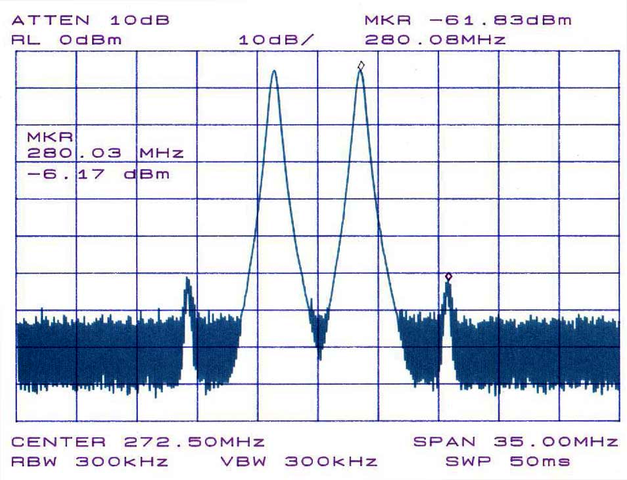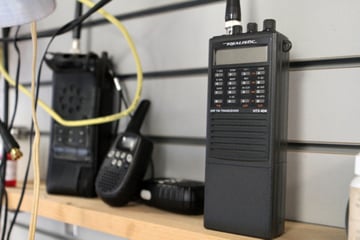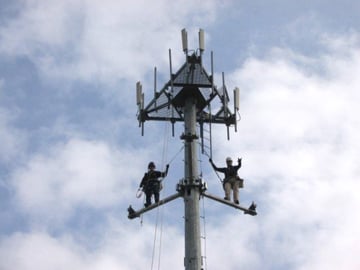- Products
- All Products
- RF PA Extension Kit
- Wireless Microphone Upgrade Packs
- In-Ear Monitor Upgrade Packs
- Wireless Microphone Antennas
- Wireless In-Ear Monitor Antennas
- Antenna Distribution for Microphones
- Antenna Combiners for In-Ear Monitors
- Multi-Zone Antenna Combiners
- Spectrum Tools
- Accessories, Cables and Parts
- Solutions by Venue
- Resources & Training
- Performance Tools
- About Us

As we mentioned in an earlier post on common wireless audio problems, Intermodulation Distortion (or IMD) occurs when signals pass through non-linear devices within electronics and create rogue or “ghost” signals that weren’t part of the original signal of origin. The topic of IMD and its relationship to frequency coordination are a crucial part of proper wireless configuration, and deserve expansion.
Let’s start with simple things you can do to avoid intermodulation when setting up or optimizing a wireless system:
- As a general rule, the more non-linear devices in a system, like diodes and amplifies, the greater the chance of creating harmful intermodulation signals. If possible, lower the number of unnecessary devices in the signal path.
- All amplifiers should be operated within their linear range. This principle applies in just about every area of audio design, but when RF is involved the stakes are higher: since the clipping caused by overextended amps causes IMD or other harmonics in addition to distorted audio.
- Make sure to use good quality components. Poorly designed and low quality devices also produce IMD, for various reasons. Make sure to use top-notch gear and high quality, low loss coax.
- Avoid active antennas. Counterintuitively, active antennas that boost gain can sometimes introduce unwanted intermodulation signals and cause distortion.
- Likewise, being too closeto a transmitter or using an amplified transmitter can produce IMD as well. This may require either a less powerful transmitter, a greater distance between transmitter and receiver, or rarely, using attenuators or deliberately lossy coax to lower the signal strength.
Even when following best practices, IMD is sometimes unavoidable, especially with systems with multiple channels, or microphones operating in areas of severe RF congestion. IMDs are mathematically predictable, but they can occur a long distance away from intentionally transmitted signals, making it difficult to know whether these signals may overlap with yours.

Above: A scan of simple intermodulation distortion. Two deliberate signals are in the center, and the intermodulation artifacts are on either side. Image courtesy Nadar Moussa.
They also combine and stack over one another in complex and confusing ways. Tracking them down is nearly impossible without mapping surrounding signals (gathered through spectrum analysis, collaboration with other wireless users, and FCC databases) and crunching these data with serious software, like Professional Wireless’s IAS program, and Shure’s Wireless Workbench (WWB) application.
Leading image courtesy Adam Greig
Tag(s):
Knowledge Guides
Alex Milne
Alex Milne was Product Marketing Manager and Digital Marketing Manager for RF Venue, and a writer for the RF Venue Blog, from 2014-2017. He is founder and CEO of Terraband, Inc., a networking and ICT infrastructure company based in Brooklyn, NY., and blogs on spectrum management, and other topics where technology,...
More from the blog

Knowledge Guides
Finding Interference from Other Radios
3 min read
| December 15, 2014
Read More

Knowledge Guides
Football Referee Wireless Microphone Q&A with Professional Wireless/Radio Active Designs' James Stoffo, and Wireless System Technician Gary Trenda
5 min read
| October 13, 2013
Read More

Knowledge Guides
Reduce, Reuse, Rejoice: The Magic of Frequency Reuse
11 min read
| December 15, 2014
Read More
Subscribe to email updates
Stay up-to-date on what's happening at this blog and get additional content about the benefits of subscribing.

